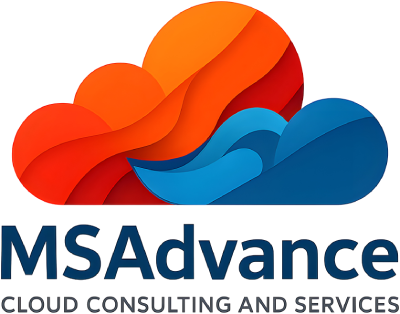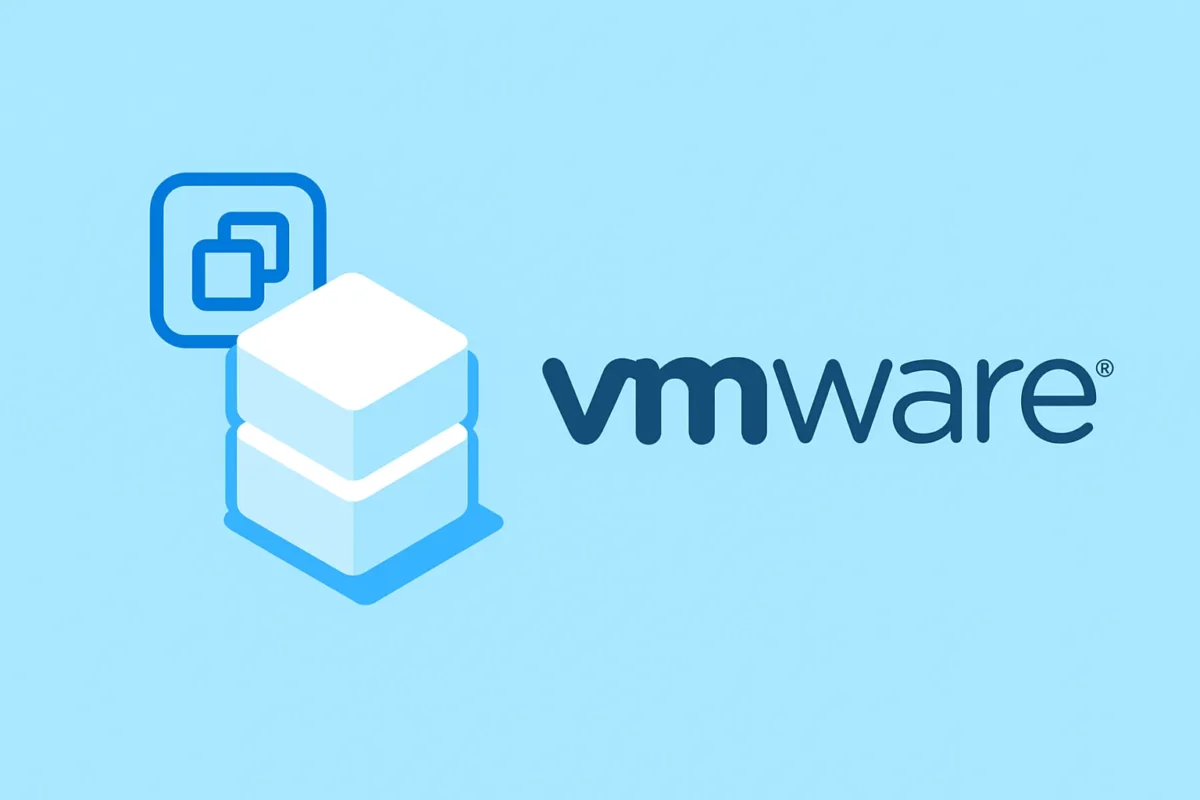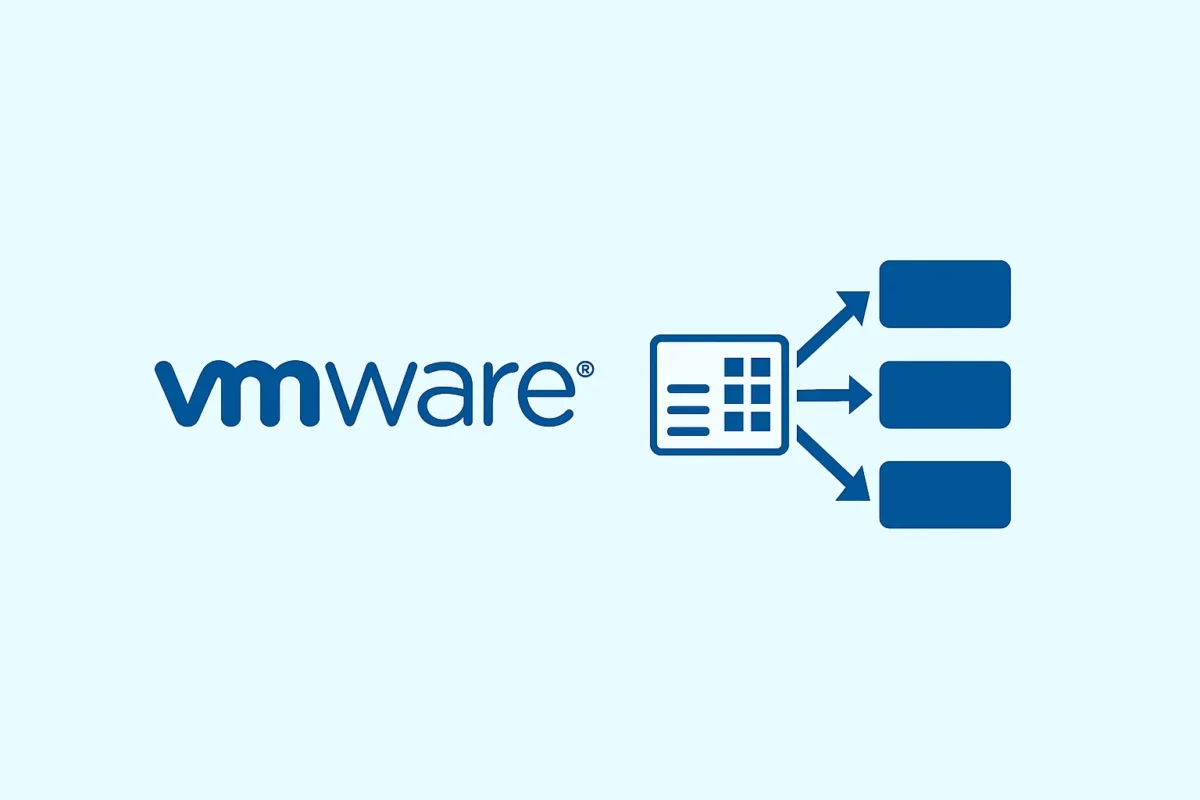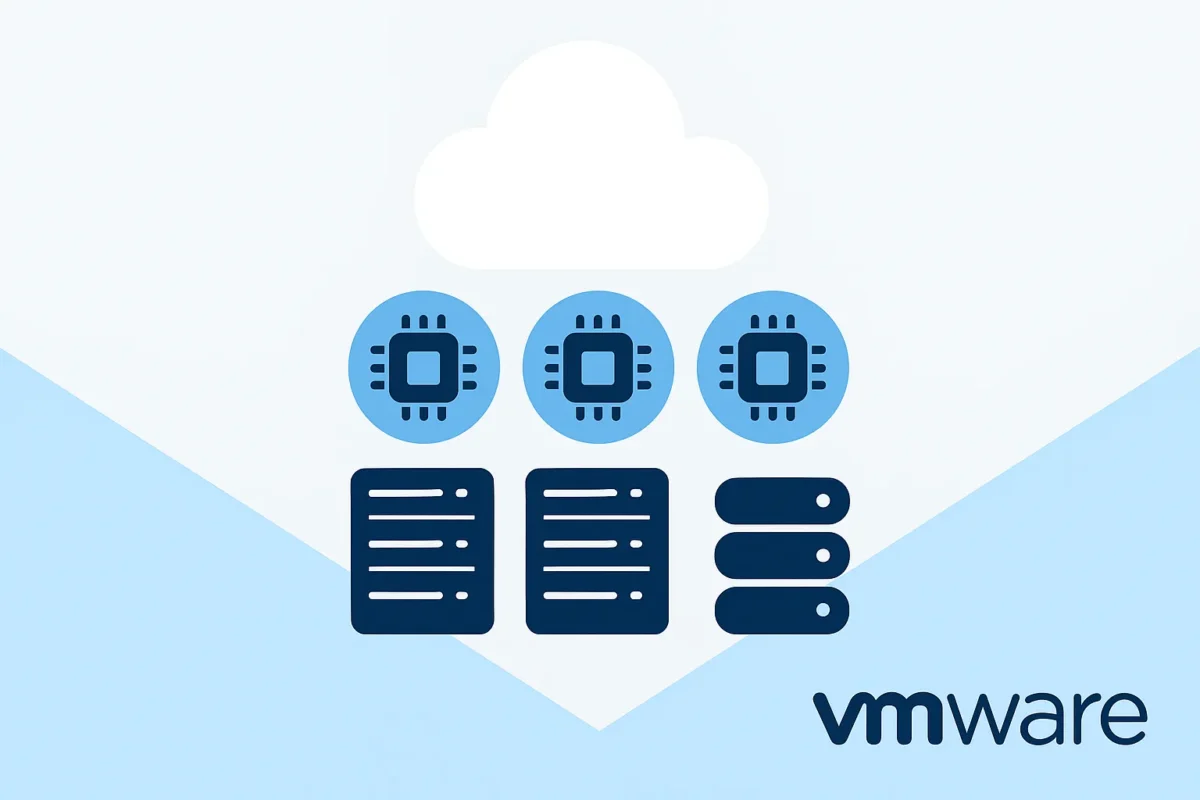Buy VMware vSphere Enterprise Plus (v8 U3) in 2025: core-based guide, what’s included, and when to choose it
Practical, up-to-date guide to buying a VMware vSphere Enterprise Plus license under a per-core subscription model (minimum 16 cores per CPU). We explain the advanced features it brings (DRS, vDS, Storage vMotion, HA, FT, etc.), how it stacks up against vSphere Foundation (VVF 9) and Cloud Foundation (VCF 9), the role of vCenter, how to calculate cores, vSAN as a capacity add-on, and a purchase checklist. MSAdvance can supply and sell official licenses and support sizing and implementation.
Need to buy vSphere Enterprise Plus with guarantees and a solid TCO?
MSAdvance sells and supplies VMware vSphere Enterprise Plus per core. We deliver core calculations, 1/3/5-year comparisons, add-on options (vSAN, DR, load balancing), and an implementation plan.
Executive summary — positioning of Enterprise Plus
- Advanced “standalone” vSphere edition (up to v8 U3): Enterprise Plus remains available as an independent edition on vSphere 8 Update 3; the vSphere 9 innovations arrive via VVF 9 or VCF 9.
- Per-core licensing with a 16/CPU minimum: you must license every physical core per host (including those disabled in BIOS).
- vCenter included (1 instance): the Enterprise Plus subscription grants rights to 1 vCenter Server instance to manage environments with active subscriptions.
- vSAN not included: it’s purchased separately as a per-TiB add-on when you want HCI with vSAN. (In VVF/VCF, vSAN capacity is included per core.)
- Commercial minimums changing: besides the technical 16 cores/CPU minimum, some channels apply a 72-core minimum per order line. Check your specific case.
How it’s licensed: per core (min. 16/CPU)
In vSphere Enterprise Plus the metric is Core with a minimum of 16 cores per CPU. Every physical core in the server must be licensed, and BIOS-disabled cores count as well.
- Per-core with 16/CPU minimum: if a CPU has 12 cores, you license 16; if it has 28, you license 28.
- Physical scope: the Enterprise Plus license can only be used on-prem (not in public clouds).
- Typical terms: 1, 3, or 5 years (co-termination recommended).
Quick checklist for core calculation
- Inventory hosts and CPUs per host.
- Confirm physical cores per CPU (not threads).
- Apply the 16 cores/CPU minimum.
- Multiply by CPUs and by hosts.
- Sum to get the total to license.
What Enterprise Plus includes — and what it does NOT include
| Area | Included | Notes |
|---|---|---|
| Management | vCenter Server (1 instance) | Centralized management for environments with active subscriptions. |
| Compute | DRS, Storage DRS, DPM, per-VM EVC, vMotion, HA, FT (up to 8 vCPU on E+), Host Profiles, Auto Deploy | Full Enterprise Plus set (v8 U3). |
| Networking | vSphere Distributed Switch (vDS), LACP, NIOC, Private VLAN, Port Mirroring | Advanced data center networking features. |
| Storage | Storage vMotion, vVols, I/O Controls, VAAI integration | vSAN is not included; purchase separately per TiB. |
| Security | vTPM, VM encryption, key providers (KMS/NKP) | Per official product line comparison. |
| Kubernetes | Optional (not included by default) | For Kubernetes and native VKS services, evaluate VVF 9. |
Enterprise Plus vs VVF 9 vs VCF 9
| Area | vSphere Enterprise Plus (v8 U3) | vSphere Foundation (VVF 9) | Cloud Foundation (VCF 9) |
|---|---|---|---|
| v9 availability | Up to v8 U3 | ✔ v9 | ✔ v9 |
| vCenter | Includes 1 instance | Included | Included |
| vSAN | Add-on per TiB | 0.25 TiB/core included | 1 TiB/core included |
| Networking/Security | vDS/NIOC, etc. | Advanced baseline features | Full NSX |
| Lifecycle automation | vLCM / profiles | Aria / base ops | SDDC Manager + advanced Aria |
| Kubernetes | Optional | Integrated VKS services | Governance and advanced networking |
v9 only via VVF/VCF; Standard/Enterprise Plus remain on v8 U3.
Calculations: cores to license (examples)
Base rule: license all physical cores (min. 16/CPU). Unlike VVF/VCF, Enterprise Plus does not include vSAN capacity; if you want HCI with vSAN, purchase the add-on per TiB.
| Scenario | Cores/CPU | CPUs/host | Hosts | Cores to license | vSAN |
|---|---|---|---|---|---|
| Basic ROBO | 16 | 1 | 2 | 32 | Optional per TiB |
| Mid-size cluster (3 nodes) | 24 | 2 | 3 | 144 | Optional per TiB |
| Dense HCI (4 nodes) | 32 | 2 | 4 | 256 | Optional per TiB |
| Growth plan (6 nodes) | 28 | 2 | 6 | 336 | Optional per TiB |
Typical purchase cases and recommendations
1) Continuity on v8 with advanced features
Profile: organizations standardized on v8 with dependencies on DRS, vDS, Storage vMotion, FT, or Host Profiles. Recommendation: vSphere Enterprise Plus for functionality and continuity, with an evolution plan to VVF/VCF per roadmap.
2) Enterprise-grade classic virtualization
Profile: 3–8 hosts with SLAs for high availability and resource automation. Recommendation: Enterprise Plus + (optional) vSAN per TiB if adopting HCI.
3) Requirements for v9, Kubernetes, or expanded governance
Profile: demand for v9 features, VKS/Kubernetes services, or advanced governance/security. Recommendation: assess VVF 9 or VCF 9.
Key purchase and usage terms
- Per-core license (min. 16/CPU) and BIOS: all cores count, including BIOS-disabled cores.
- Includes vCenter (1 instance): for centralized management with an active subscription.
- On-prem only: the license does not allow deployment in public clouds.
- Commercial minimums: some distributors enforce a 72-core minimum per order/line (in addition to 16/CPU). Confirm your case with MSAdvance.
- Perpetual v8 to subscription: Enterprise Plus perpetual licenses only update to 8.x; for later versions, the new subscription editions are required.
How to buy with MSAdvance (process & checklist)
- Discovery: inventory of hosts/CPUs/cores, versions (7/8), and feature dependencies (DRS, vDS, FT, etc.).
- Sizing: core calculation and 1/3/5-year scenarios; if applicable, sizing the vSAN add-on per TiB.
- Offer: Enterprise Plus and alternatives (VVF/VCF), add-ons (vSAN, Live Recovery/SRM, Avi), support, and co-termination.
- Supply/Activation: license delivery, vCenter onboarding, best practices (DRS, HA, LCM, networking with vDS).
- Optional implementation and periodic health checks.
| Area | Item | Status |
|---|---|---|
| Inventory | CPUs/cores per host verified (includes BIOS) | □ |
| Features | Needs for DRS/vDS/FT/Host Profiles validated | □ |
| vSAN | Is vSAN required? (per-TiB add-on) | □ |
| Edition | Enterprise Plus vs VVF/VCF justified | □ |
| Co-termination | Renewal dates aligned | □ |
| Compatibility | HCL, drivers, and firmware validated | □ |
Common mistakes when licensing per core
- Counting threads instead of cores: licensing is per physical core (Hyper-Threading is not licensed).
- Forgetting the 16/CPU minimum: 8–12-core CPUs still require 16 licenses per CPU.
- Assuming vSAN is included: in Enterprise Plus, vSAN is not included; purchase the per-TiB add-on if you need HCI.
- Deploying to a public cloud: not permitted under Enterprise Plus terms.
- Ignoring commercial minimums (72 cores): may apply per order/instance via channel policy; verify before budgeting.
Frequently asked questions
Can I upgrade to vSphere 9 with Enterprise Plus?
No. v9 is available through VVF 9 or VCF 9. Enterprise Plus remains on v8 U3.
Is vCenter included?
Yes, the Enterprise Plus subscription includes 1 vCenter Server instance to manage environments with active subscriptions.
How are cores counted?
License all physical cores with a minimum of 16 per CPU; BIOS-disabled cores are included.
Is vSAN included in Enterprise Plus?
No. vSAN is purchased as a per-TiB add-on. If you prefer vSAN capacity included per core, evaluate VVF/VCF.
Are there purchase minimums beyond 16/CPU?
In some channels a 72-core minimum is enforced per order/instance (commercial policy), in addition to the technical 16/CPU minimum. Check your specific case.
Official links
- SPD: vSphere Enterprise Plus (Feb 2025) — per-core metric, 16/CPU minimum, BIOS, vCenter included (1 instance), on-prem use: Official PDF.
- vSphere — product line comparison — v9 only in VVF/VCF; Standard/Enterprise Plus through v8 U3: Official document.
- vCenter 8.0 U3g release notes — maintenance on v8 U3: Release Notes.
- 72-core commercial minimum per order — channel/news reference: CRN, LenovoPress.
Business-oriented conclusion
vSphere Enterprise Plus is the most robust way to standardize on-prem with v8 U3 when you need DRS, vDS, HA/FT, and advanced operations, while keeping the flexibility to add vSAN per TiB. If your roadmap requires v9, integrated Kubernetes, or NSX, evaluate VVF/VCF. MSAdvance can supply and sell the best mix and support deployment to maximize value and minimize risk.
Want a fixed proposal to buy vSphere Enterprise Plus?
We deliver core calculations, term comparisons, and a technical implementation plan.










